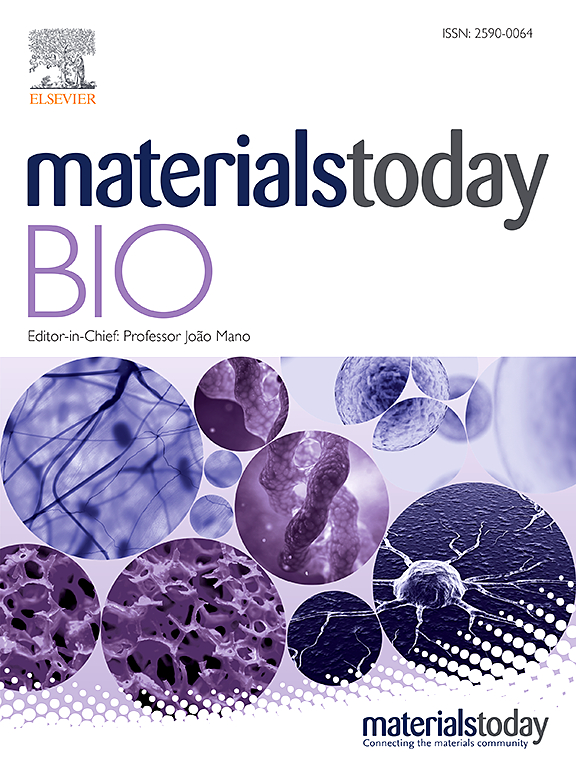Novel anti-pyroptosis drug loaded on metal-organic framework for intervertebral disc degeneration therapy
IF 8.7
1区 医学
Q1 ENGINEERING, BIOMEDICAL
引用次数: 0
Abstract
Intervertebral disc degeneration (IVDD) is the main cause of low back pain, pyroptosis is a major contributor to various diseases, including IVDD; however, there is currently no effective drugs targeting pyroptosis for therapy. In this study, we established pyroptosis model in nucleus pulposus cells (NPCs) in vitro and searched pyroptosis inhibitors in FDA Medicine Library. High throughput screening study revealed that Pirfenidone (PFD) was the most effective pyroptosis inhibitor among 1500+ FDA drugs, which was confirmed by further experiments. As administering PFD alone may lead to poor efficacy due to short action time and low bioavailability, we designed a smart delivery system for PFD. A pH-responsive metal-organic framework (MOF), poly-His6-zinc (PHZ) assembly, loaded with PFD (PFD@PHZ) was designed for IVDD therapy. PHZ was shown to have excellent lysosomal escape properties and bioavailability of PFD. In addition, the release of PDF from PFD@PHZ could be triggered by the acidic microenvironment of degenerated intervertebral discs. PFD@PHZ was also shown to effectively inhibit pyroptosis, senescence, and extracellular matrix (ECM) degradation in NPCs, both in vitro and in vivo, thereby mitigating the progression of IVDD in rats. Thus, the current study shows PFD as a novel inhibitor for pyroptosis, and PFD@PHZ as a potential nanomaterial for efficient IVDD therapy.

用于治疗椎间盘退行性病变的新型金属有机框架载体抗椎间盘突出症药物
本文章由计算机程序翻译,如有差异,请以英文原文为准。
求助全文
约1分钟内获得全文
求助全文
来源期刊

Materials Today Bio
Multiple-
CiteScore
8.30
自引率
4.90%
发文量
303
审稿时长
30 days
期刊介绍:
Materials Today Bio is a multidisciplinary journal that specializes in the intersection between biology and materials science, chemistry, physics, engineering, and medicine. It covers various aspects such as the design and assembly of new structures, their interaction with biological systems, functionalization, bioimaging, therapies, and diagnostics in healthcare. The journal aims to showcase the most significant advancements and discoveries in this field. As part of the Materials Today family, Materials Today Bio provides rigorous peer review, quick decision-making, and high visibility for authors. It is indexed in Scopus, PubMed Central, Emerging Sources, Citation Index (ESCI), and Directory of Open Access Journals (DOAJ).
 求助内容:
求助内容: 应助结果提醒方式:
应助结果提醒方式:


